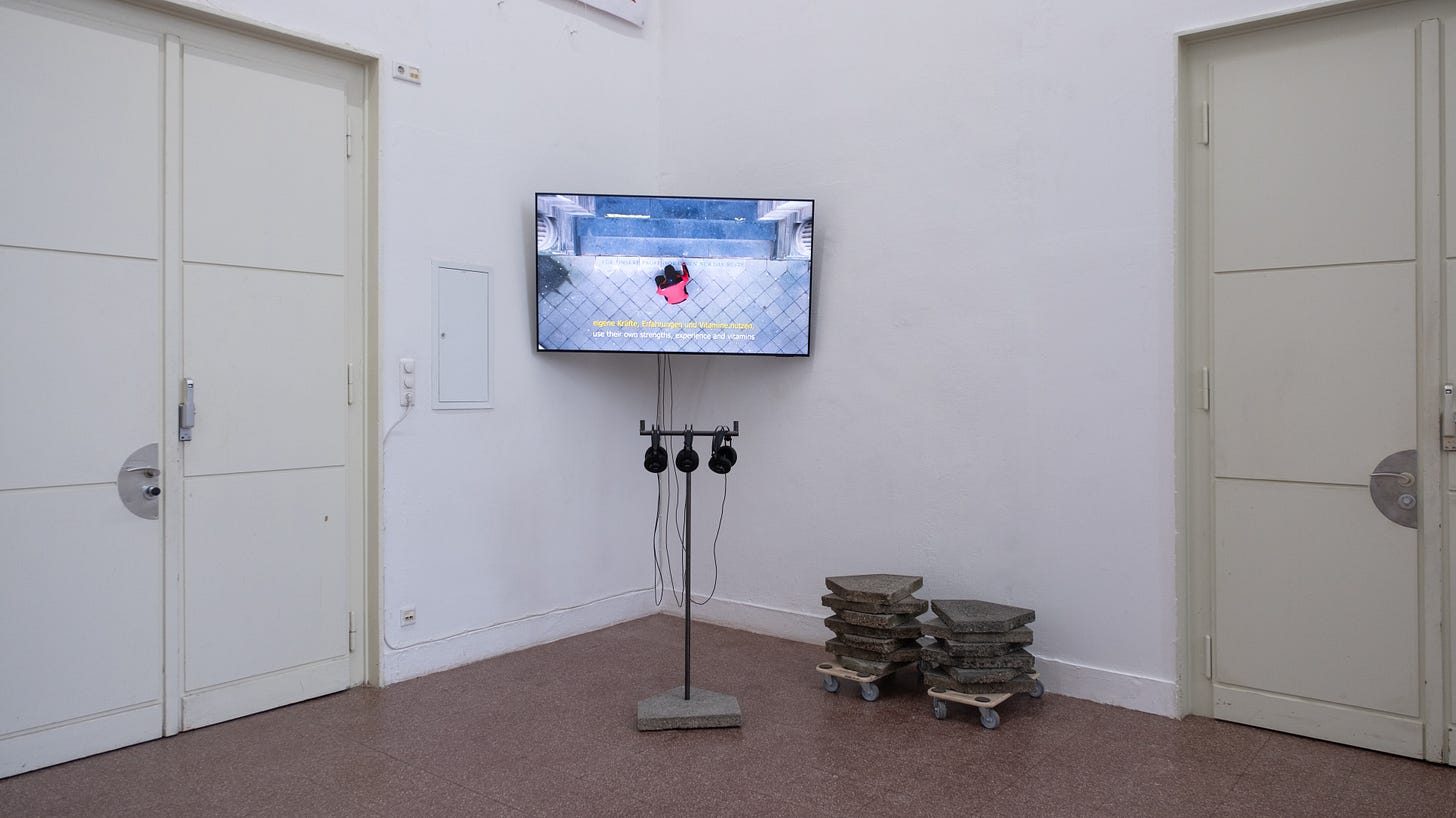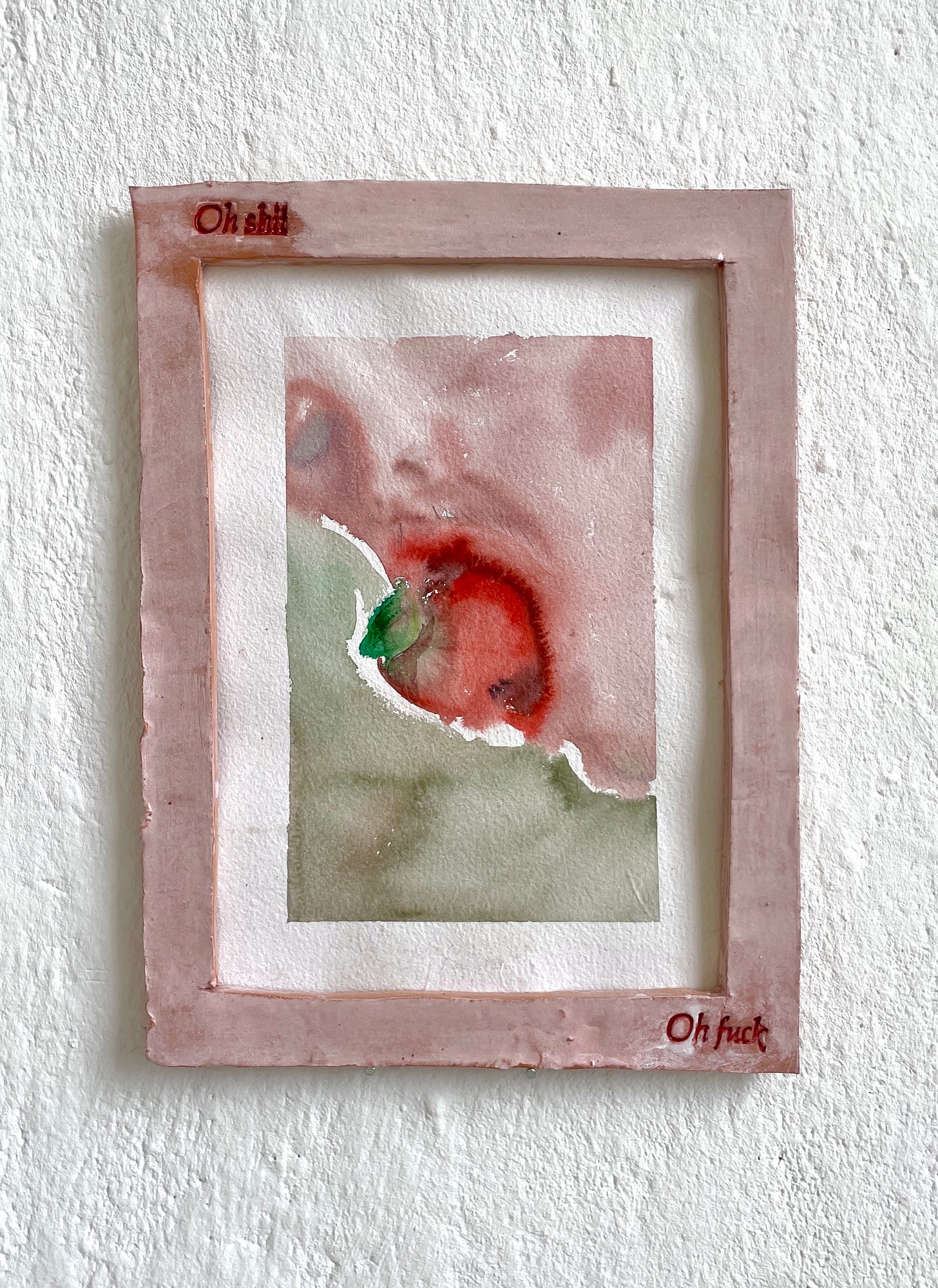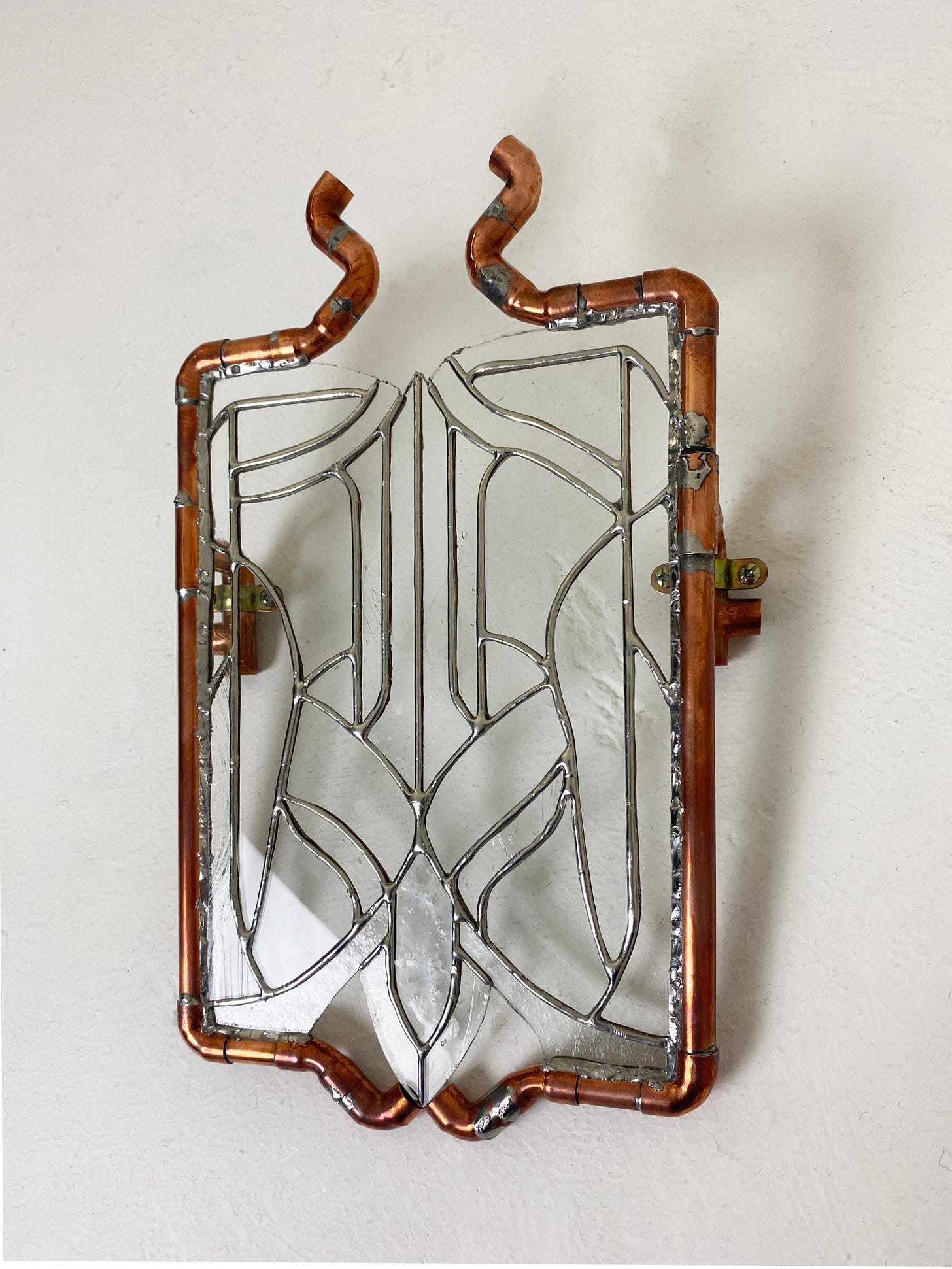Half Time Show: The Winter Rundgang at Kunstakademie Düsseldorf
This year, I got to see the show during the preview days. Here is a selection of my absolute favorites.
Before we praise, we gotta be harsh. I don’t know whether my taste changed or the quality dropped since last year. I was rather disappointed this time. But then I went to the Städelschule Rundgang in Frankfurt today and thought you know what though? There is hope for Kunstakademie Düsseldorf. There's worse.
I was seriously traumatized by the Katharina Wulff Class. Room 118 was my last straw. I don’t know what y’all are doing the whole damn day but y’all are not working. Having the Kunstakademie Düsseldorf on your CV isn’t going to make up for your lack. If you’re not learning anything, consider switching classes. Or academies. There are only three people with potential: Nina Hassert, Nikolay Petrov, and Florentine Bücker. Nina and Nikolay showed technically skilled works with a strong 20th-century aesthetic that can go a long way if connected to a contemporary aspect. Florentine’s dreamy painted vision of a fluttering eye has potential as well. But everybody else there: If that’s the level you want to keep it at, you better drink a whole lot of fruit juices to get sufficient vitamin B or good luck!
I’m happy to see artists from last year developing in a great direction. Back in the favorites are once again:
Maja Günther (Sabrina Fritsch Class)
Btw: you can see more of my favorites on Instagram.
Markus Henschler (Gregor Schneider Class) went into an institutional critique direction with nur das [only that] (2025) by temporarily swapping the stones in front of the Academy’s main entrance. Initially, the stones read “Only the best for our students”, Markus intervened with “Only the best for our professors”, highlighting the steep power disbalance within the academy. It’s an original take on maintenance art, I think of Mierle Laderman Ukeles (Silent Generation, US-American) mopping the stairs of a museum in the 70s to highlight all the work taken for granted in such an institution. A 27-minute film accompanies the process with a voice-over offering more context on Markus’s critique. The main concern is the disproportionately high salaries of professors who arguably do the least work within the structures. Nevertheless, a friend raised concerns over the possible consequences of such an intervention: With the populist shift towards the right, might the legitimate protest not lead to what we call in German ✨Verschlimmbesserung✨ and confirm the bias of the art professor as “the lazy artist”, resulting in more restrictions and defunding in the wrong areas that hurt the students even more?
Paul Derichs’s (Danika Dakic Class) work requires a closer look: A (smartphone?) snapshot of a storefront. The photographer’s reflection is visible in the glass. The metal shutters uphold a barrier between them and the storefront. In between, there’s some trash. The woven metal structure reminds me of textile close-ups, especially since Paul printed this pic on a soft blanket. The shutters and blanket combo also makes me think of hostile design and the precarity of unhoused people. Paul has been going in this direction for a while now, I hope he’ll keep reflecting on the ethics of this choice.
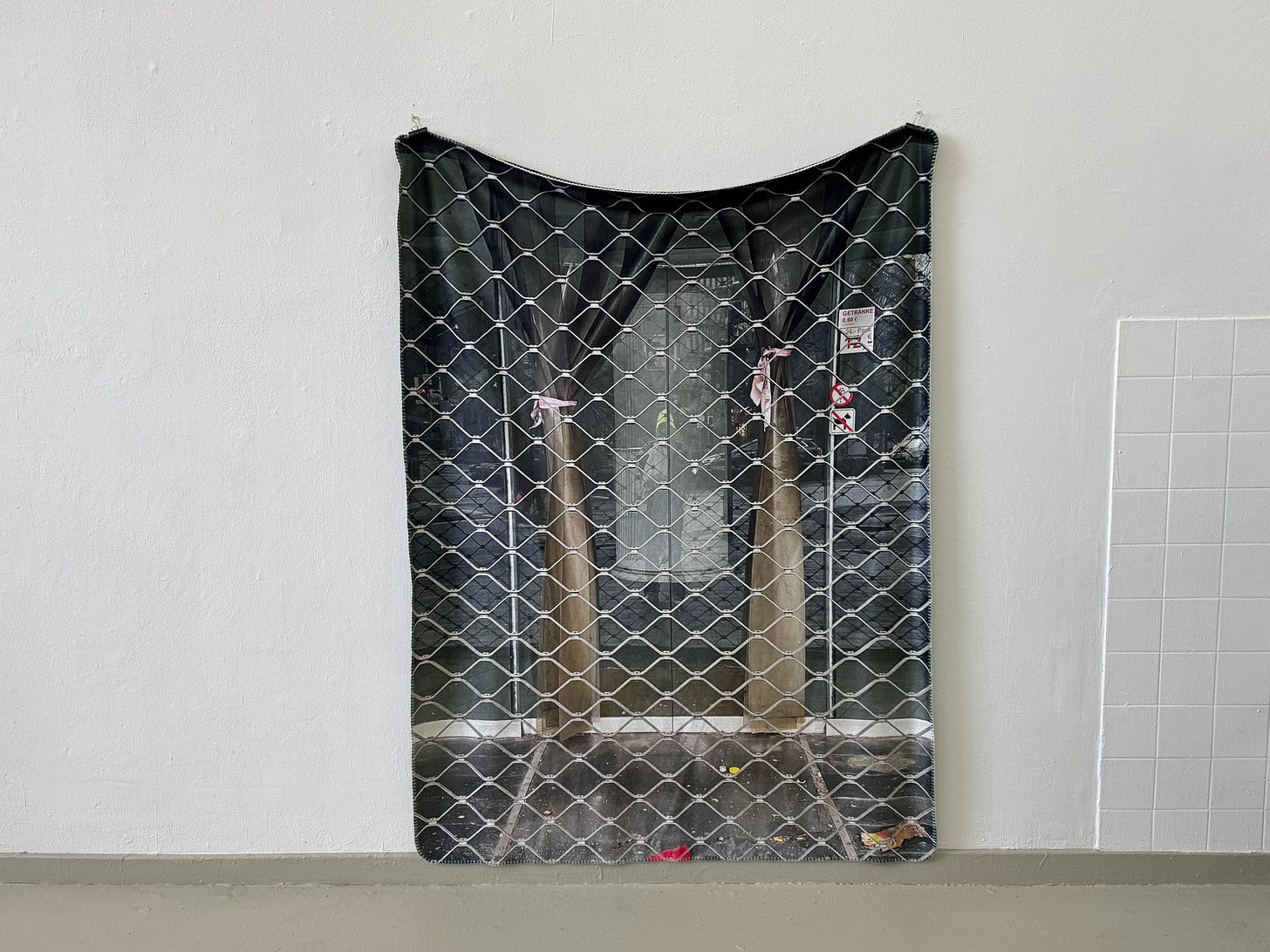
Gregor Leiprecht (Sabrina Fritsch Class) made two practically simple but conceptually intriguing paintings: A thick glob of paint - one more metallic and the other more bubblegummy - poured onto glass held by a vintage (looking) frame. Professionally speaking, the paint takes on plasticity. Also professionally speaking, the paint looks like cake frosting.
I’m hyped to see how Juliana Paek’s (Maximiliane Baumgartner Class) work keeps evolving. Since I last saw her in the studio, she made giant leaps. Juliana presents a three-part painting arranged as a pedigree. The ancestral pedigree, commissioned by royals and aristocrats of various cultures and centuries to strengthen their entitlement to power, is usually extremely structured, suggesting scientific and historical accuracy. But Juliana’s presented pedigree remains obscure. No names or years to be found. Only rough metal and Juliana’s violet color palette connect the three painted relatives. She paints the paternal generation indistinctly and androgynously. Their child gets more space. Holding up a piece of cloth, they reveal another disheveled pedigree, this one being the complete opposite of the rigid metal structure holding the piece together. The part of the title the veil of vero alludes to Veronica, the biblical woman who imprinted Jesus’s face on a piece of fabric as he went to the cross. Juliana often merges the human with the cyborgian in her works. The way she paints here reminds me of diffuse AI visions that haven’t taken on their final shape yet.
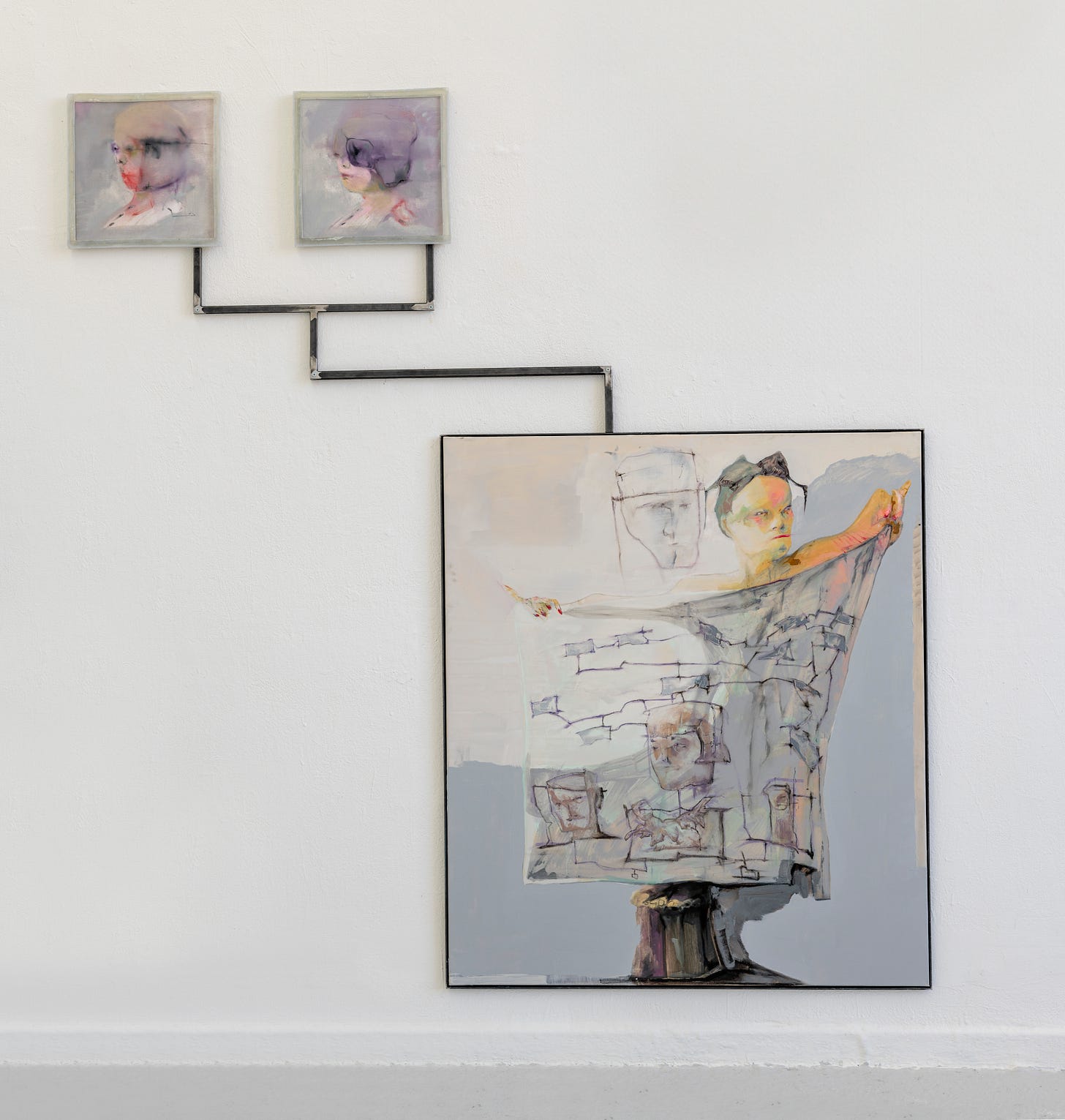
Maja Günther (Sabrina Fritsch Class) surprised me last year with a fuck ass horse in the middle of a room. This year, she kept it small-scale. Adamsapfel [Adam’s Apple] (2024) is a watercolor in a glazed ceramic frame (love that material choice). Maja pictured a person eating an apple. Is that accurate? the face set against a green backdrop takes up the upper diagonal half of the composition. They’re holding their apple with their mouth, it will drop if they take a bite. The crimson red lips dissolve in the watercolor, one eye closed, the other blue eye void of emotions. On the frame, Maja wrote “Oh shit” and “Oh fuck”. Is that remorse after getting kicked out of Paradise or cries of pleasure?
Gamze Palabiyik (Alexandra Bircken Class) heard Niki Minaj had High Heels on her tippies and said, “Ok bet.” For her installation in a room I move silently (2025), she took three pink silky ballerina shoes and extended the shit out of them until they turned into claws. Their ribbons tie them to the wall, helping to execute an impeccable en pointe. Making it three isn’t functional though, unless you’re a dragon or some other multi-limbed creature. The title makes me think of tiptoeing, fearing somebody’s anger. It also makes me think of pseudo-rise-and-grind guys who tell everybody and their mom about how they “move in silence” only to do a podcast with five monthly listeners.
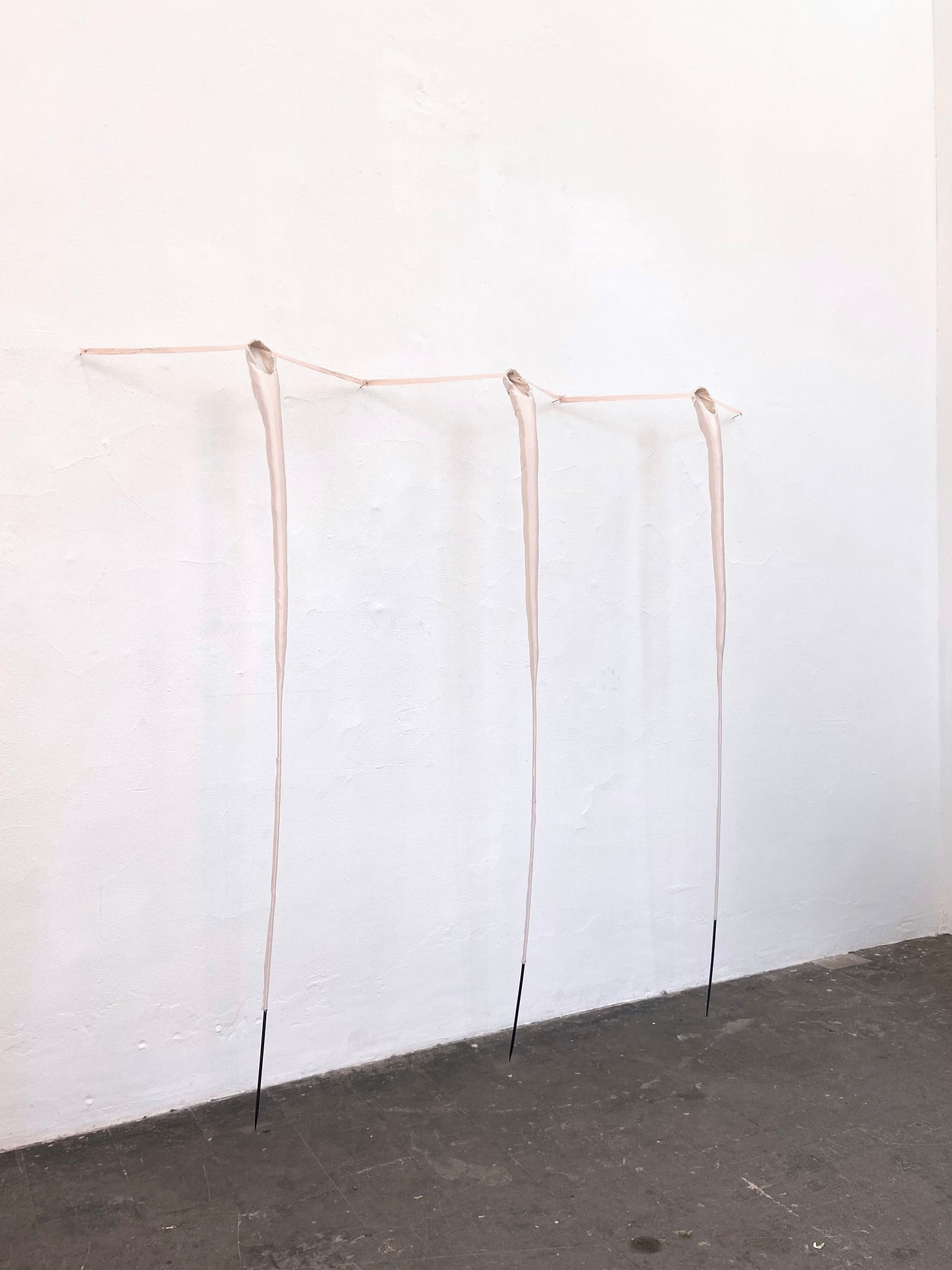
Lisa Mayer (Yeşim Akdeniz Class) is toying around. Her brand is children's toys, the fluffier and brighter the merrier. She’s arranging them into kitsch compositions on LSD. Is a childlike aesthetic what people expect of a young female artist? Lisa shows her teeth with a knife or two peeking out in Escape (2025). Teenbaby/Schnuller (2024) is a pacifier with a dangling metal chain. Lisa arranged four acrylic nails around the pacifier, exploring the range from self-infantilization to aesthetic womanhood. She ain’t your Lolita.
Tayyib Sen (Alexandra Bircken Class) made Mitgift [Dowry] (2025), a rug made out of black zip ties. He didn’t fill the whole space, though. Tayyib used only as much ornament as necessary to evoque the idea of tapestry. The shadows cast on the wall behind add more ornamentation. The flexible material allows for intricate rounded shapes. But there’s also a sense of unease due to the spikes all over the place.
Last year, Luis Zimmermann (Thomas Grünfeld Class) printed monochromatic overlayed objects on fabric. The printed motive extended into the checkered textile stripe in the left third of the composition. He keeps developing this approach further. This time (as far as I can judge), he printed photographs on several translucent textile layers which he then stretched over each other and partly sewed together on top of the canvas. As a result, it’s hard to make out exactly what these layers picture. He also uses the rectangular photo format, creating geometrical compositions within the picture. Sometimes, he breaks the regular rectangle by following the photographed shapes, enhancing the collaged look. Colorful (industrial?) belts frame the works.

I was happy to see plenty of artists working with metal. Shannon Sinclair (Danika Dakic Class) made an intricate aluminum shrine imitating metal minting, the process of hammering motives into the reverse side of a metal object to reveal its sculpted counterpart in the front. Apparently, it also included sound, but I didn’t hear it so my experience is tied only to the visuals. The shrine holds space for a mirror flanked by two doors. She adorned every free space with motives ranging from antique flower and vessel arrangements to surreal symbols. The two hands flanking the heart at the bottom of the shrine look like taken from a medieval reliquary. Shannon suggests divine opposites with a nude woman approached by a dove and a crow next to a clothed one. A star replaces the heads of both human figures. And even though so much suggests to be taken from the past, a closer look reveals the present: The back exposes the original material: food packaging. One wall next to the mirror is made up of a female portrait. The micro bangs and sunnies suggest the here and now. Everything together becomes a celebration of the feminine divine: An oyster and a clit lean against the mirror.
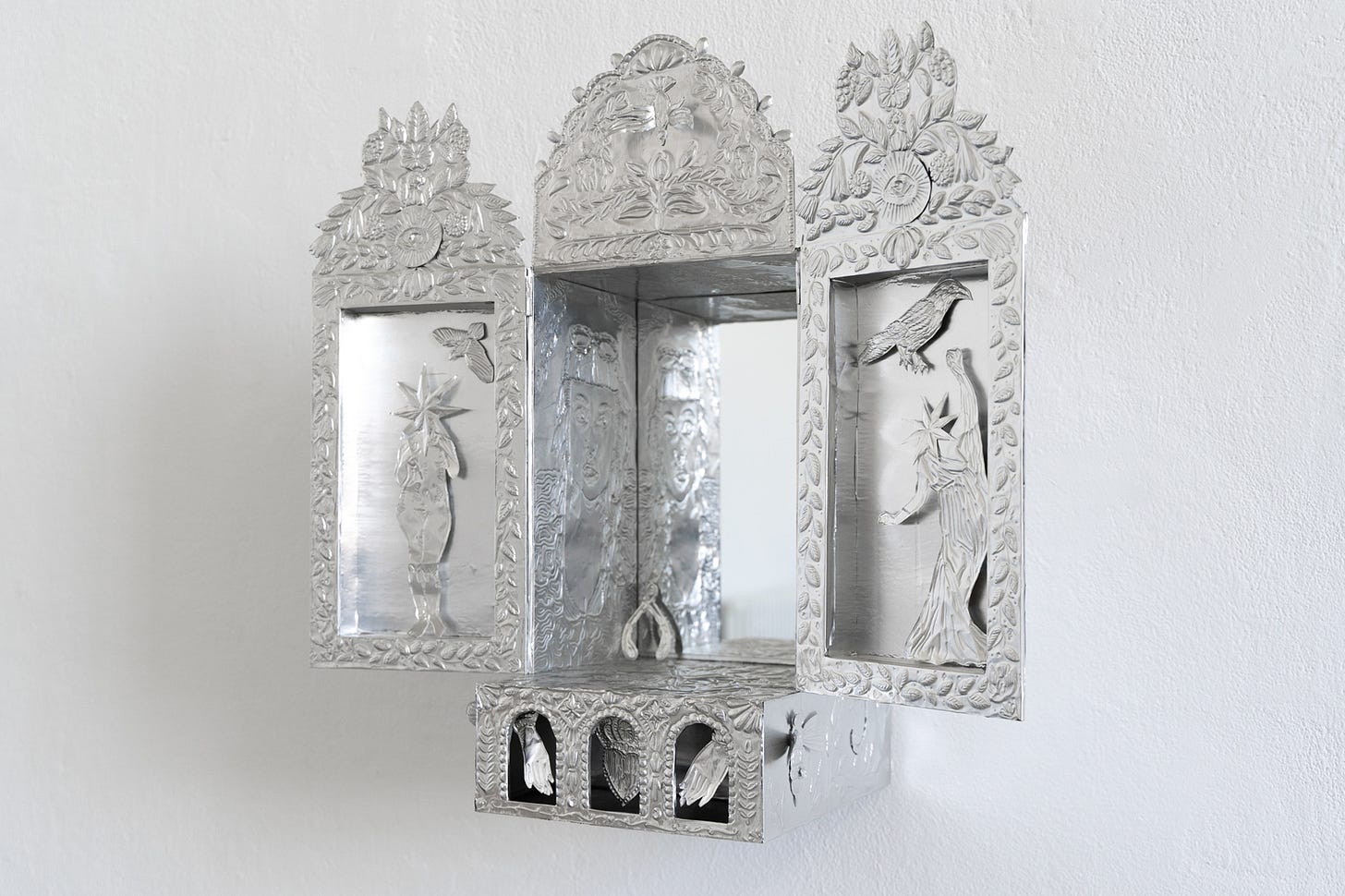
Lukas Stöver (Gregor Schneider Class) presents two metalwork pieces: Two double portraits are enclosed in a wooden frame. I first thought that even though this piece is aesthetic, it’s not that original. I saw Daniel Otero Torres’s (Millennial, Colombian) sequenced images made of clay at the Venice Biennale last year (see Donde llueve y se desborda 2 (2024) for reference). But Lukas’s titles reveal a different direction: Vorher Nachher [Before After] plays with plastic surgery reveal pics. Andy Warhol’s (1928-1987, US-American) Before and After 4 (1962) is an important predecessor. But while Andy’s reveal focuses on perfection and smoothness, Lukas’s representations are unflatteringly textured given that he’s working with tin. The post-rhinoplasty close-up? I can see every pore, yikes. Lukas fits very well into the KUBAPARIS formula. He will do perfectly fine after graduation.
Marie Schubert (Alexandra Bircken Class) did what looks like an artistic definition of the man baby: She made a rocking baby chair out of metal, but the seat part is a pair of Calvin Kline boxers. That chair looks like a torture instrument. Maybe one could plug it into an outlet?
Rosalie Becher (Martin Gostner Class) combined steampunk and art nouveau aesthetics for her work Instar 115 (2024): A copper pipe frames the handy rectangular composition, dropping into a wave at the bottom and opening up the top. In the space within, Rosalie formed an intricate glass mosaic. While church window mosaics usually focus on the vibrant glass, Rosalie emphasizes the delicate metallic structure keeping the colorless glass in place. And instead of going for full perfection, some parts of the glass are cut and incomplete. This piece appears to me as a postapocalyptic remnant of a past civilization.
The Rundgang at Kunstakademie Düsseldorf was open from February 5 to 9, 2025. Read my recap of last year’s Rundgang here.
As you’re reading this, I’m on my way back from the Städelschule Rundgang in Frankfurt. Follow me on Instagram to get my insights.
See you soon!!!
Jennifer
The Gen Z Art Critic





